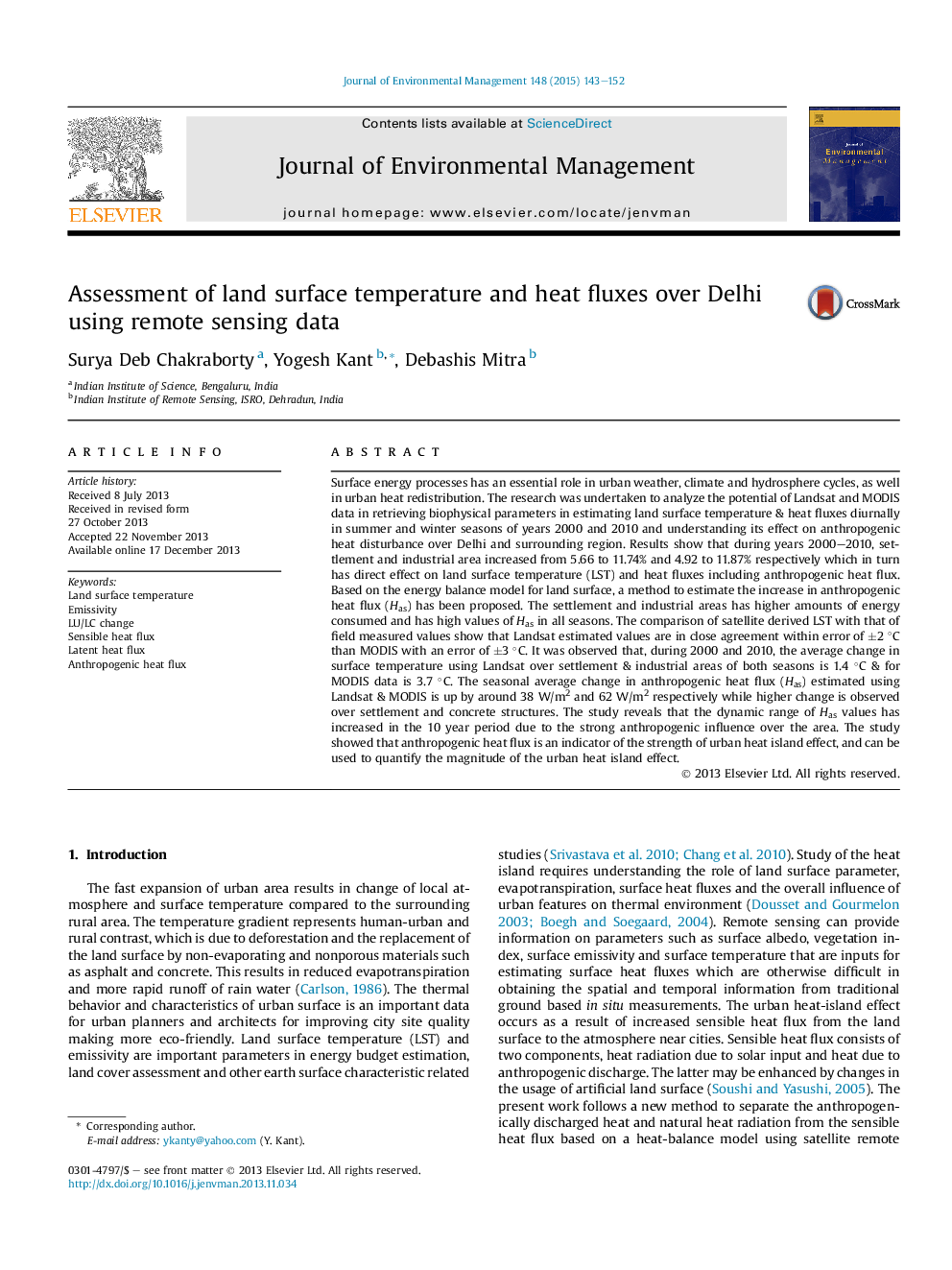| کد مقاله | کد نشریه | سال انتشار | مقاله انگلیسی | نسخه تمام متن |
|---|---|---|---|---|
| 1055696 | 1485264 | 2015 | 10 صفحه PDF | دانلود رایگان |
Surface energy processes has an essential role in urban weather, climate and hydrosphere cycles, as well in urban heat redistribution. The research was undertaken to analyze the potential of Landsat and MODIS data in retrieving biophysical parameters in estimating land surface temperature & heat fluxes diurnally in summer and winter seasons of years 2000 and 2010 and understanding its effect on anthropogenic heat disturbance over Delhi and surrounding region. Results show that during years 2000–2010, settlement and industrial area increased from 5.66 to 11.74% and 4.92 to 11.87% respectively which in turn has direct effect on land surface temperature (LST) and heat fluxes including anthropogenic heat flux. Based on the energy balance model for land surface, a method to estimate the increase in anthropogenic heat flux (Has) has been proposed. The settlement and industrial areas has higher amounts of energy consumed and has high values of Has in all seasons. The comparison of satellite derived LST with that of field measured values show that Landsat estimated values are in close agreement within error of ±2 °C than MODIS with an error of ±3 °C. It was observed that, during 2000 and 2010, the average change in surface temperature using Landsat over settlement & industrial areas of both seasons is 1.4 °C & for MODIS data is 3.7 °C. The seasonal average change in anthropogenic heat flux (Has) estimated using Landsat & MODIS is up by around 38 W/m2 and 62 W/m2 respectively while higher change is observed over settlement and concrete structures. The study reveals that the dynamic range of Has values has increased in the 10 year period due to the strong anthropogenic influence over the area. The study showed that anthropogenic heat flux is an indicator of the strength of urban heat island effect, and can be used to quantify the magnitude of the urban heat island effect.
Journal: Journal of Environmental Management - Volume 148, 15 January 2015, Pages 143–152
